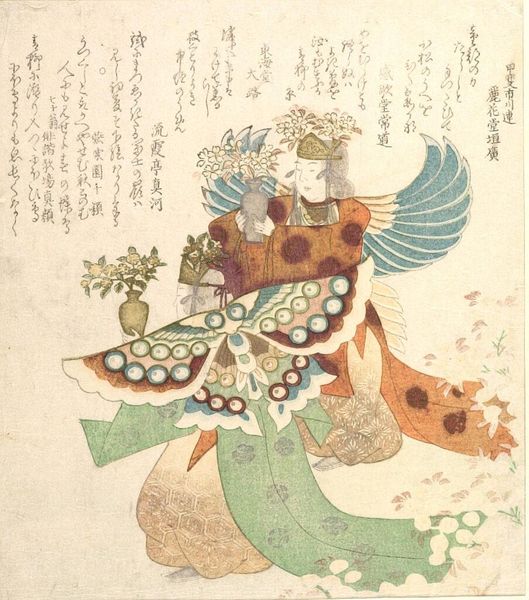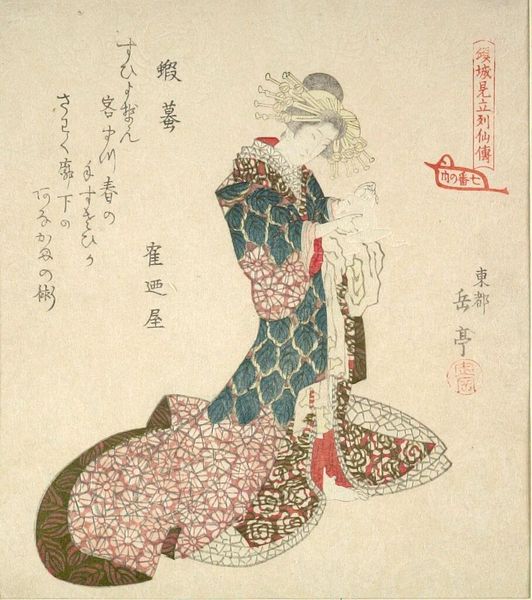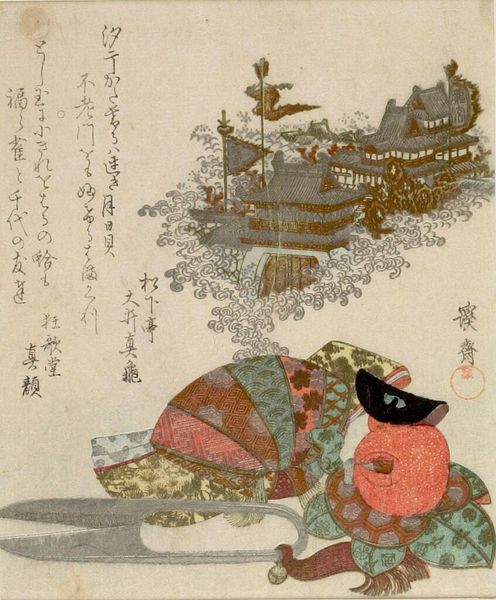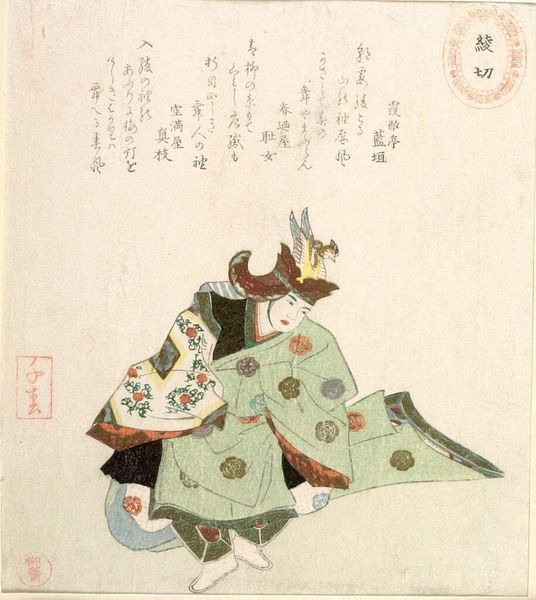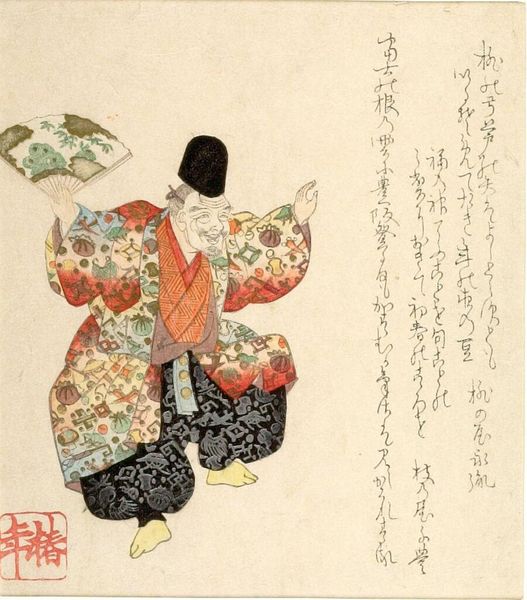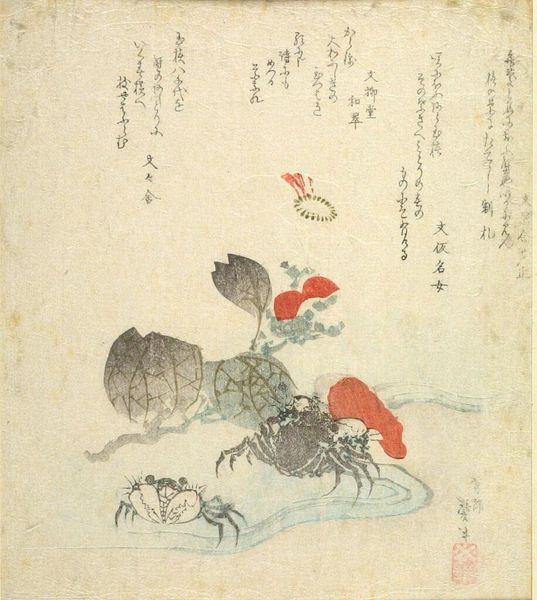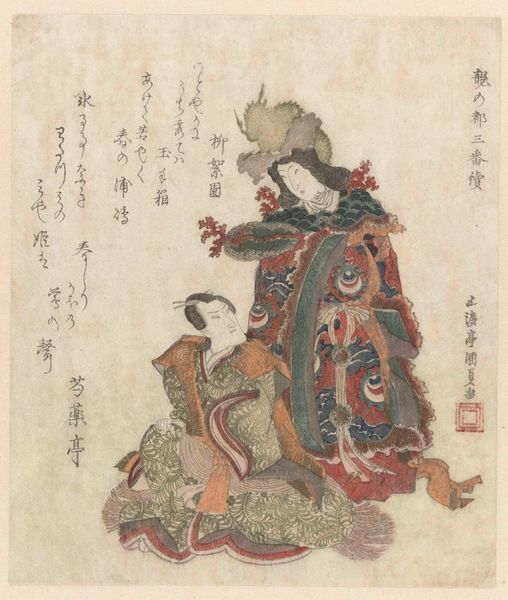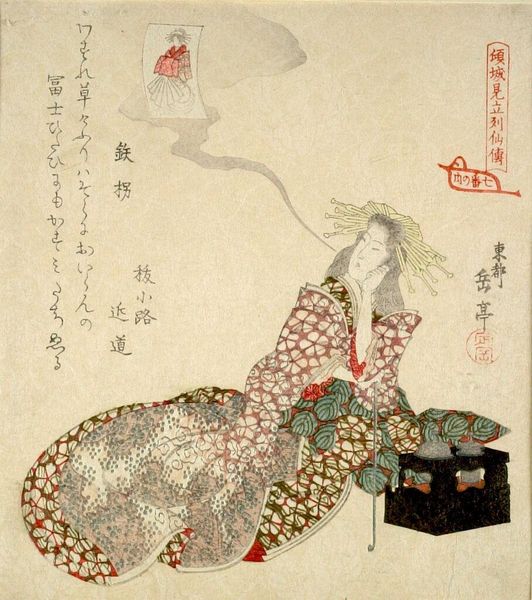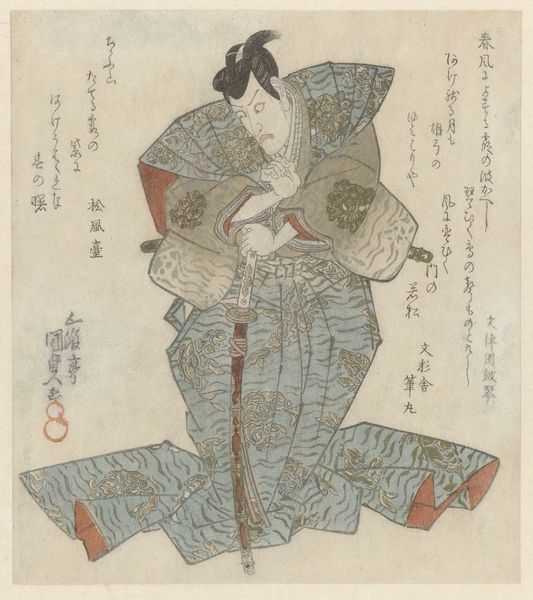
The Bugaku Dance RanryÅÅ c. 18 - 19
Dimensions: Shikishiban
Copyright: CC0 1.0
Curator: This is Takashima Chiharu's *The Bugaku Dance RanryÅÅ*. The print depicts a figure from a traditional Japanese dance. What strikes you most? Editor: It's the mask. It looks both ancient and strangely modern. How do we understand the cultural significance of this dance and its representation? Curator: Bugaku, originating in the 7th century, was traditionally performed for the imperial court. The mask conceals identity, allowing the dancer to embody a historical or mythical figure. Think about the role of ritual and performance in shaping cultural identity, and how this print might have circulated these ideas. Editor: So, the print isn't just a record, but also a way of disseminating cultural values? Curator: Precisely. And consider Chiharu's choice to represent this dance – what statement might he be making about tradition in his own time? Editor: That's a perspective I hadn't considered. Thanks for opening my eyes to the layers of meaning embedded in this work. Curator: It's a reminder that art is never created in a vacuum; it's always in dialogue with the past and the present.
Comments
No comments
Be the first to comment and join the conversation on the ultimate creative platform.
